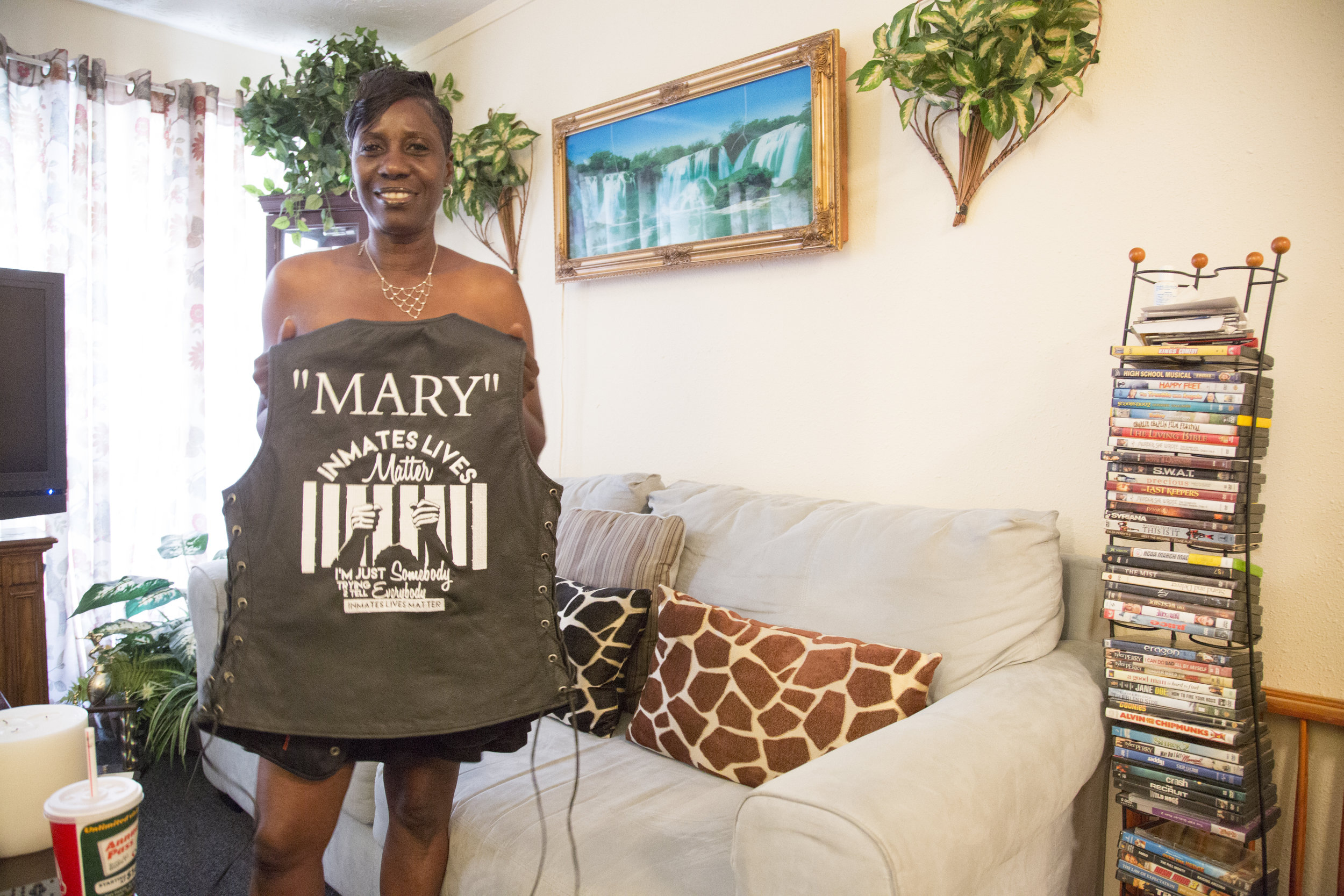Graham V. Florida
Terrance Graham beams with his radiant smile and perfect teeth. That’s the memory I hold of visiting him a few years ago. Today, I think of Terrance and Graham v. Florida—the Supreme Court Ruling that said you cannot sentence kids to die in prison for non capitol crimes.
Terrence Graham was incarcerated in 2003 when he was only 16.
Terrence grew up in Jacksonville. In spite of “The sunshine State” license plate motto, Florida can be brutal. It is a balkanized population, wealthy retirees, sophisticated, hedonistic tourists, the northern part of the state which thinks very southern and the southern portion with somewhat northern values. Very urban and very rural, very Cuban, very Dominican, very Haitian. In the midst of this are pockets of extreme poverty populated by African Americans. Jacksonville—the hub of NE Florida has a major locus of poverty and here Terrence lived with his Mother Mary. Mary and her husband would host regular crack parties. “I would put down a plate of food and feed the youngest, then it would go up to the next child, then Terrance, then Michael the oldest. If there was anything left on the plate, I would eat it.”
This geography of poverty, this environment may have described why a 17-year old boy was arrested outside a convenience store with three friends. Terrence hit the owner with a small baseball bat as they were fleeing the store with loot in hands. No one was knocked unconscious, no one was killed. A non-capitol offense by a young boy, barely a teen and a life sentence.
May 17th 2010, Seven years past, The Supreme Court said this practice stops.
May 21, 2026 is the tentative release date for Terrence. Twenty-two years for a mistake as a teenager. He will be 41. His incarceration will have cost the State of Florida more than a million dollars.
His last disciplinary report was coincidentally right after I visited him two years ago. He was put in the hole for two months where he lost 20 pounds. This is Florida State Prison in Starke.
Relieving Terrance from the hopelessness of life without parole is a first step. Offering rehabilitation, better resources for family, schools and children to prevent these environments from breeding little more than despair remains a dream.
Graham 7 years after his incarceration.
Mary Graham has missed her son for the past sixteen years. Since he was sixteen, Terrence has been incarcerated. He was sentenced to die in prison.
Terrence grew up with two crack-addicted parents. School was a series of sixteen different institutions as evictions created dislocation and disruption. Classes were special ed for Terrence and his three brothers. School represented food and nutrition. Without the breakfasts and lunches, Tavaris would get a bag of Doritos and parse it out as a meal to the four boys. Mary remembers the fridge being adequate. “We grew up country…My Mama used to say if you had bread and potatoes in the house you could always make a meal. It was hard. My kids might have some bread and jelly, but they never went to bed hungry.” Terrence remembers other parts of that narrative. “There would be spoiled milk or government cheese in the refrigerator.”
“We were poor. I would cook one plate of food and put it in front of Diante. He would eat his fill and move the plate to Terrence. Terrence would eat and then move it to Michael, and then to Tavaris. After all the boys ate from the same plate… if there was anything left over I would eat. It was hard. We not the Brady Bunch.”
“When I was 15 I started to party. I was new to the game but I enjoyed the life of the city. I met Harry [Terrance’s father] when I was 20. He was a Vietnam vet 11 years older than me.” Three children later they were in a whirlwind of crack and abuse. “We were kicked out of the house and we weren’t let in. We stayed in the street while the party went on.”
Section 8 evictions, violence, drugs? Where was Family services? Mary explains, “There are two kind of addicts…I was an ‘in-control’ addict. When they would come because of complaints, I would be able to put on a controlled face. They would come, because Michael was out of control a lot. He was what you call ADD. He would do things like try to sent an apartment building on fire. So they came to look at my apartment and I would always have it neat. I kept a neat house.”
Bryan Gowdy doesn’t like the reference to Atticus Finch, although he is tall, lanky, soft-spoken, and works out of a modest two story building in Jacksonville. “I was working a lot of appellate corporate law and I thought this would be an interesting, individual case. I certainly didn’t expect to be arguing in front of the Supreme Court.”
There was a surprise ruling by the Florida Supreme Court in 2018. They overturned sentences of life with the possibility of parole that had been doled out, citing that they were counter to the U.S. Supreme Court ruling Graham v. Florida. The majority argument was that because a defunct Florida parole system had not granted parole to a single person sentenced to life in prison, the state could not continue to sentence juveniles to life with the possibility of parole.
In fact, as the state evaluates parole, the fact that the inmate was a juvenile at the time of a crime counts against them. This is counter to Supreme Court decisions that have determined the adolescent brain to be still developing, giving children the unique possibility of reform and rehabilitation.
“The practice of the Parole system in Florida is so counter to this information, that the Supreme Court here has ruled Life WITH parole effectively is still a death sentence for a child in Florida.”
“Effectively I am a small business with my partner. I have a family to support so I can’t take all the cases I would like to take. But I am going to take a new case that relates to this. Too much is a stake for these kids.”
When Terrence was first sentenced, the authorities had somehow painted the family as being nuclear, well cared for with nurtured, loved children. The judge was influenced by the discordant actions of a teen who would turn his back on this perfect home. When the case was returned from the Supreme Court for re-sentencing, the judge looked at a more detailed, revealing and demeaning picture of Terrence’s environment and mitigating factors contributing to his delinquency. It was the polar opposite of what was presented in the original sentencing.
“Realistically when you argue for them you have to prepare as if each case is a death penalty case… effectively they are. When there are determinate sentences that are 50, 60, 70 years and the parole system is so hostile… they are death sentences.”
Meanwhile in Starke Florida, Terrence is in the Main Unit West. He helps clean and cook for the Close Managed section that houses the behavioral problems and the sixty-six inmates of death row. Soft-spoken, Terrence explains “When I came into the system and looked at my EOS (End of Sentence) date it said ’99-99-9999.’ That meant I was never getting out. Now I look at it at I figure I served 13 years now and have a 25 year sentence. I have some time earned for behavior so I have about eight years left. I get out sometime around 2025. It’s a real date.”
Timeline Courtesy of Claire Griggs, Professorial Lecturer in the Department of Justice, Law & Criminology at American University











